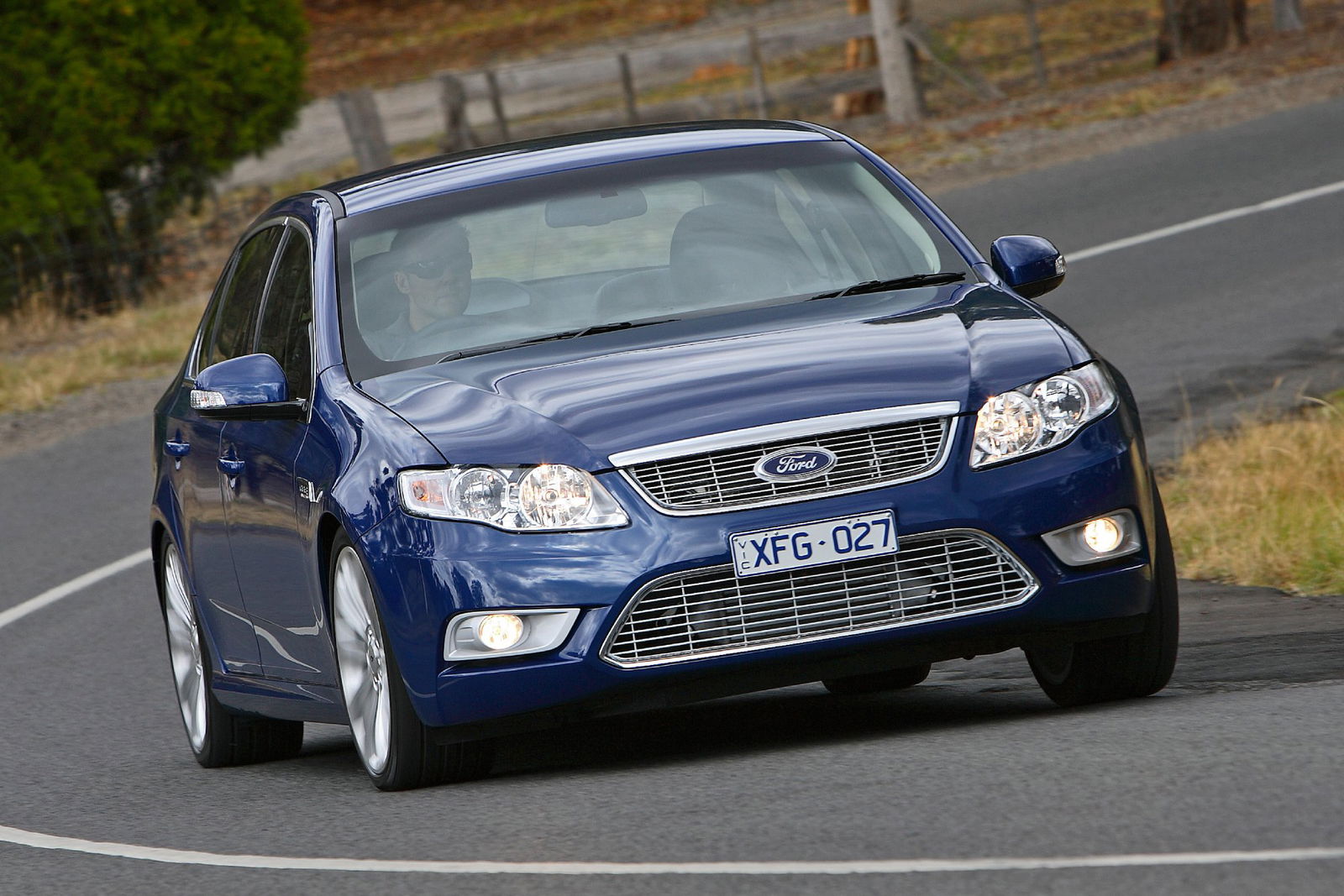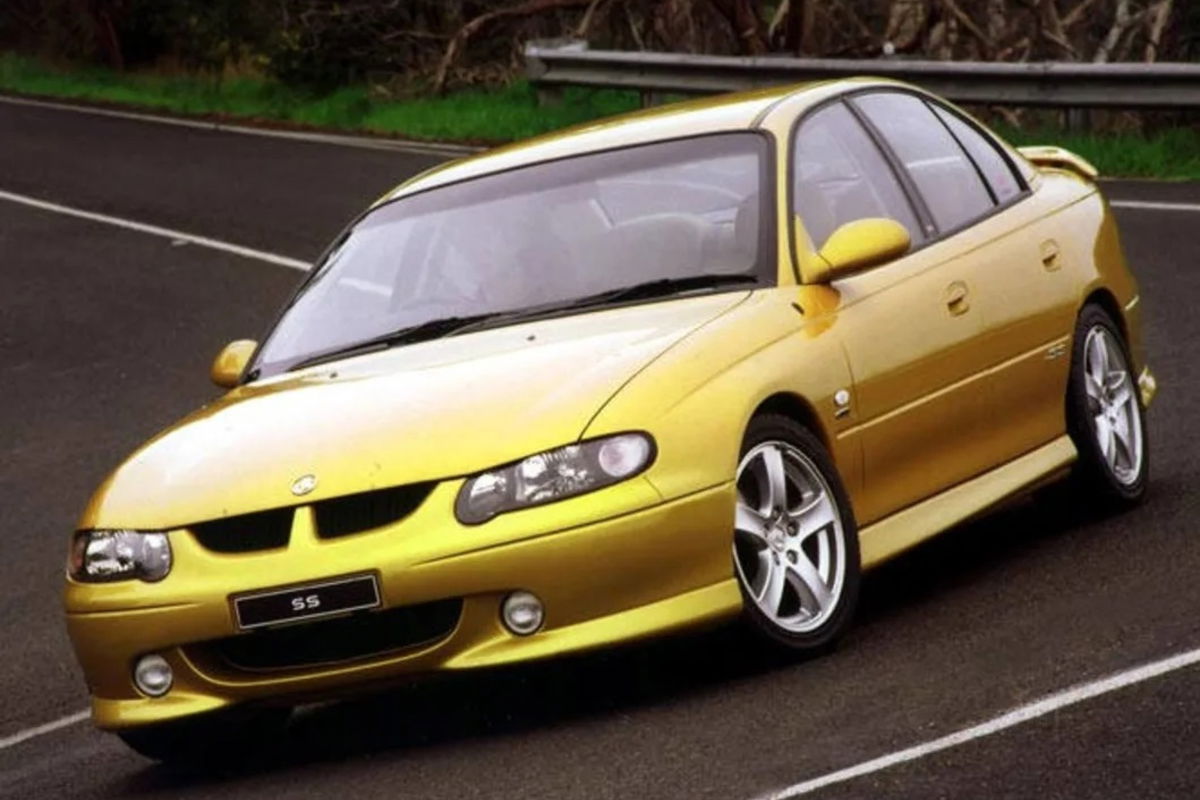Pathos is a powerful tool, appealing to the emotional part of an argument, rather than any actual real results.
When Liberal MP and Shadow Minister for Home Affairs Andrew Hastie took to social media this week to call for Australia to once again make “complex things”, he did so standing next to an icon of local manufacturing.
The Track Red XW Ford Falcon GT – based on a US design and powered by an engine made in North America – invokes memories of a bygone era, when Holden and Ford did battle around Mount Panorama in cars you could buy, with the old saying of “win on Sunday, sell on Monday” ringing true.
It’s a time which sadly came to an end almost a decade ago, when Ford, Toyota and Holden all stopped producing cars locally, switching off their production lines within a year of each other.
As an owner of an Australian-built car – an EF Fairmont Ghia – and someone who comes from a family which has owned many across the years, it’s an industry I’m proud of having witnessed exist, but we’ve got the face the facts and admit it’ll never return to how it once was.
Hastie has since given a wishy-washy response to another op-ed in The Australian, saying maybe he does or doesn’t want to bring back the local car industry, though calling for the production of “complex things” while referencing Australian cars seems like a pretty logical step.
Sadly eight years on from the closure of Holden’s Elizabeth plant, it’s more unlikely than ever that we’ll see vehicles built from the ground-up en masse in Australia, however Hastie’s comments overlook the small but strong impact local engineering is having on the automotive landscape.
Last year more than 10,000 vehicles were locally converted from left- to right-hand drive by teams in Melbourne, with Walkinshaw (formerly Holden Special Vehicles) responsible for the Chevrolet Silverado and Toyota Tundra, Ram’s own joint-venture reengineered the 1500, 2500 and 3500, while Ford’s F-150 was tweaked by RMA Automotive.
All of these operations are based in Melbourne, and played a crucial role in allowing OEMs to bring their vehicles to market at a minimal price increase, compared to third-party firms.
Likewise, Premcar – born out of the demise of Ford Performance Vehicles – is now not only working on Nissan’s Navara and Patrol Warriors in Melbourne, but is also collaborating with the Japanese brand overseas in South Africa and North America through Infiniti.
Though it isn’t built in Australia, the Ford Ranger – Australia’s best-selling vehicle outright in 2023 and 2024 – was engineered by the Blue Oval’s local team, alongside the Everest, making them the vehicles with the most local R&D input on sale currently.
Both are made for Australia in Thailand where the quality of production is high but at a relatively low cost, while the nation’s Free Trade Agreement with a vast number of countries allows the vehicles to be exported to more places than Australia could.
While employment numbers have slipped over the past few years, Ford Australia still employs approximately 1500 people through its OEM operations, more than 1000 of whom work in design and development – departments which led to the introduction of the upcoming Ranger Super Duty.

Though this is well past what the prime was when Australia was producing more than 200,000 cars a year, it represents a significant investment in local employment and industry – the latter of which ‘They Vote for You’ claims Hastie has consistently voted against.
Hastie has been a critic of the government’s net zero plans and the New Vehicle Efficiency Standard (NVES), which perhaps are reasons behind his claims that Labor wants to “fill our streets with silent soulless cars made in China” which are filled with technology we didn’t design and can’t control.
Of course there is no evidence that Labor is actively pushing Chinese vehicles on Australian buyers, and sales data shows Japan is still by far the most popular country of origin for the cars we buy, driven largely by Toyota’s local dominance.
The MP’s comments that soulless cars are being pushed onto consumers is also interesting. If the general public really cared that much about what they drove, why weren’t high-performance variants the most popular Falcons and Commodores? Why has the Toyota Camry always been a staple? And does a car only have a soul because of where it came from?

According to Hastie, Australians have become helpless consumers, and that both the Labor Party and the Liberals led to the car manufacturing industry leaving local shores.
Of course, that latter point wasn’t really expanded on in the video, and Hastie doesn’t go into detail about how the billions in assistance for the local car industry wasn’t enough to keep it afloat.
Nor did Hastie touch on then-Treasurer Joe Hockey effectively daring Holden and General Motors to exit local manufacturing in December 2013, telling the US giant “Either you’re here, or you’re not”. The latter became reality less than four years later with the Liberals still in charge.
A lack of support for the car manufacturing industry led to not only its demise but also the closure of suppliers, something which would be near-impossible for Australia to restart.

So what is Hastie’s end goal? If it’s to bring car building back to Australia, then who will do it? What incentives will they be given? How would it be deemed viable?
Ultimately, his video should be taken as nothing more than someone with leadership aspirations of a party in crisis, still licking its wounds after a decimating election loss earlier this year.
While it’d be nice to walk into a showroom and buy a car made by someone I know, it’s wishful thinking to believe it’ll ever happen again.












Discussion about this post